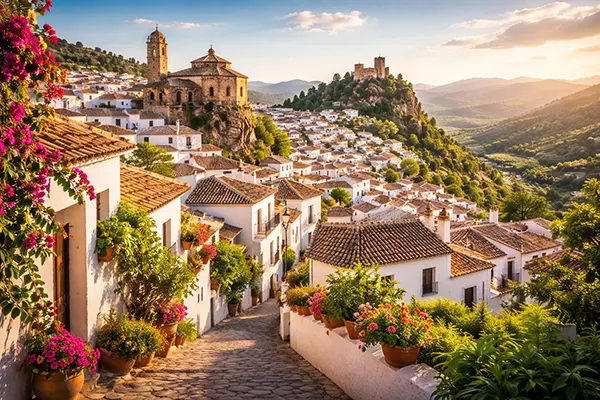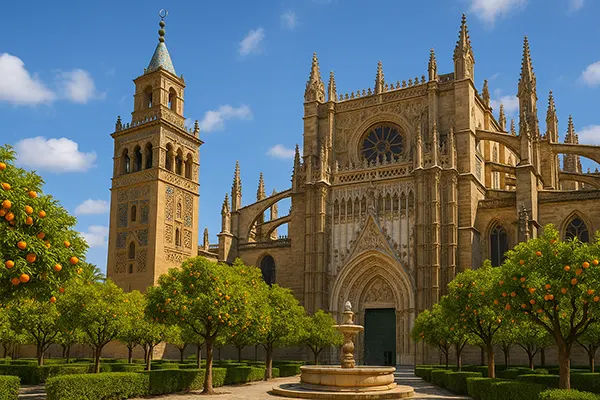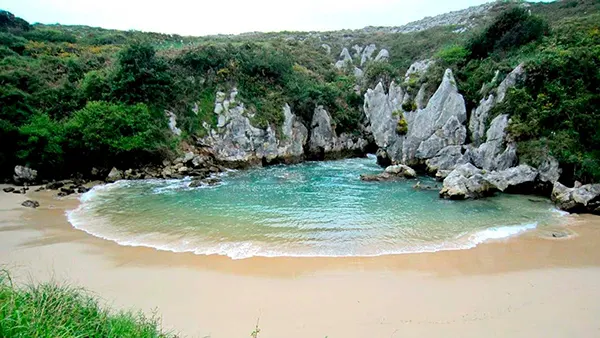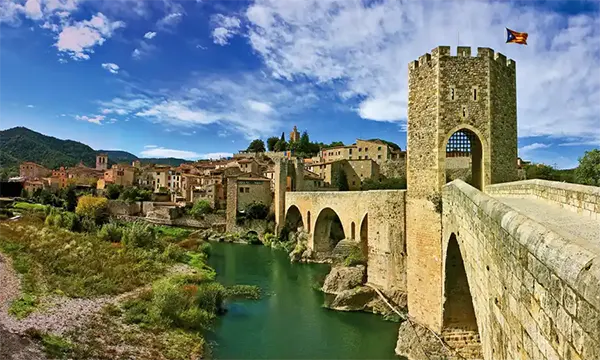San Martín de Frómista: A Romanesque Gem on the Camino de Santiago
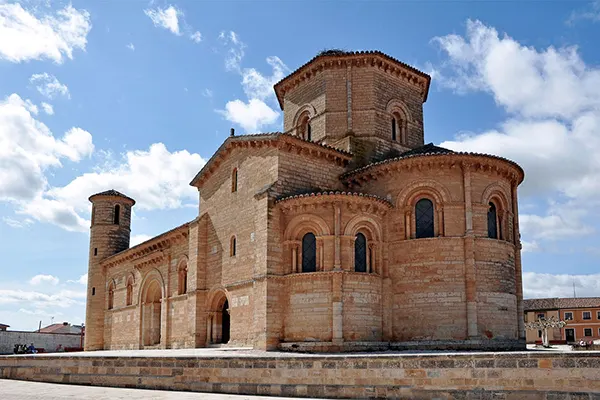
In the heart of Spain’s Castile and León region, the modest town of Frómista guards a treasure from the 11th century — the Church of San Martín. Despite its proximity to the famous pilgrimage route of the Camino de Santiago, many pass by unaware of the architectural and spiritual richness this Romanesque monument offers. For lovers of medieval art, religious heritage, or cultural tourism, San Martín de Frómista is an essential stop that captures the essence of a long-gone era.
The Pilgrimage Connection and Historical Importance
San Martín de Frómista was commissioned around 1066 by Doña Mayor of Castile, widow of King Sancho III of Navarre, and was part of a monastic complex that no longer survives. It quickly became a notable point along the Camino de Santiago, welcoming pilgrims travelling west to Santiago de Compostela. The church’s location in Palencia, near the confluence of important medieval roads, reinforced its significance as both a spiritual waypoint and a rest stop.
Unlike many grand cathedrals that later rose along the route, San Martín was constructed with deliberate simplicity and purity, reflecting early Romanesque aesthetics influenced by Cluniac monastic reforms. Its design served both the contemplative needs of monastic life and the constant stream of pilgrims passing through.
During the centuries, the church fell into disrepair and lost many of its original attachments, but a careful restoration in the late 19th and early 20th centuries revived its historical features. Today, it stands largely as it would have in the 11th century, allowing visitors to appreciate one of Spain’s earliest and most intact Romanesque structures.
Religious Symbolism in a Pilgrim’s Landscape
The church is not merely a monument but a symbol along the pilgrimage — a metaphorical and physical place of transition. Situated along the Meseta plains, where the journey becomes psychological and less scenic, San Martín de Frómista provides a moment of spiritual and architectural uplift. The rhythmic arches and the balanced layout echo the idea of divine order and rest for the weary traveller.
Inside, the light plays subtly on the sandstone walls, with the semicircular apse and barrel-vaulted nave creating an almost monastic silence. Pilgrims report that the site offers a rare sense of contemplation that contrasts with busier points along the route, such as Burgos or León.
Moreover, its role as a communal gathering point during medieval pilgrimages and feast days helped forge a network of solidarity among travellers. Even today, those walking the Camino find in Frómista a place of calm that bridges the physical journey with inner reflection.
Architectural Features and Decorative Sculptures
San Martín de Frómista is a textbook example of Spanish Romanesque architecture, with its basilica plan, three naves, semicircular apses, and iconic cylindrical towers. Constructed of warm limestone, the façade presents a clear and harmonious outline, devoid of flamboyance but rich in balance and proportion. Its dimensions are modest, yet the structure’s precise geometry contributes to a monumental feeling.
The twin bell towers flanking the western façade are among its most recognisable elements, though historians suggest they may have been added slightly later. The corbels along the roofline are carved with fantastic creatures and human figures, a hallmark of Romanesque symbolic artistry intended to instruct and protect.
Each capital inside the church tells a story: from Biblical scenes to fantastical beasts, they reflect the didactic purpose of medieval stonework. The vaults and arches are supported by slender columns that maintain the sense of vertical elevation despite the structure’s small size, creating an interior that is austere but not oppressive.
Highlights of Romanesque Stone Carving
The capitals in San Martín are small masterpieces of sculptural narration. Among them are vivid depictions of the Daniel in the lion’s den, the story of Samson, and abstract foliate designs. These images served both as visual sermons for illiterate congregations and as meditative prompts for clergy and monks.
Particularly noteworthy are the grotesques and hybrid figures carved into the modillions, which were believed to ward off evil or represent human vices. This blend of sacred and profane is typical of the Romanesque style and speaks to the complex medieval worldview that shaped the church’s iconography.
These decorations are more than ornament; they are integral to the church’s function as a space for moral and spiritual instruction. Thanks to careful restoration, their details remain impressively intact and continue to offer rich insights into 11th-century religious art and thought.
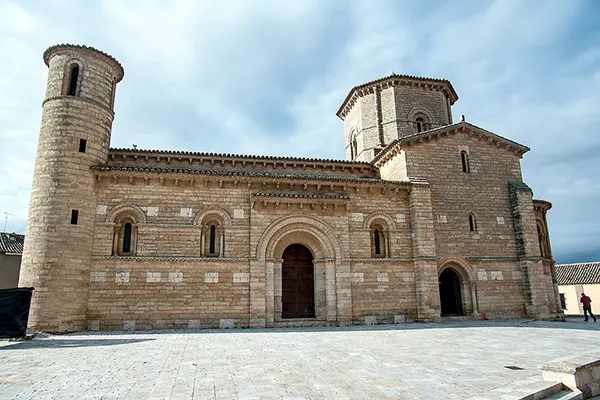
Frómista and the Pilgrims’ Route Today
Modern-day Frómista retains its connection to the Camino de Santiago through its albergues, signage, and daily passage of walkers. Pilgrims arriving from Carrión de los Condes typically stop here before continuing to León. The church remains open to visitors throughout the year and is one of the architectural highlights of the Palencia province.
The Canal de Castilla, an 18th-century engineering feat that runs through Frómista, adds a further layer of interest to the town. Visitors often take time to explore its locks and walking paths, blending natural and cultural sightseeing in one stop. Local tourism initiatives have also created guided visits that include the church, the canal, and nearby museums.
Nearby stops like Villalcázar de Sirga and Castrojeriz offer additional historical depth, allowing travellers to build a richer picture of life along the pilgrimage route. San Martín remains a spiritual anchor among these, not least because of its enduring simplicity and symbolic gravity.
Cultural Relevance and Preservation
In recent years, efforts by heritage organisations and the Spanish state have ensured that San Martín de Frómista continues to be maintained not just as a relic but as a living piece of history. Its status as a Bien de Interés Cultural (Asset of Cultural Interest) ensures its protection and integration into regional tourism planning.
While it may not have the grandeur of the cathedrals in Santiago or Burgos, the church’s authenticity and coherence make it invaluable. Its relatively untouched character is precisely what draws those who seek a more intimate connection with the spiritual history of the Camino.
Whether visited as part of a long pilgrimage or as a cultural detour, San Martín de Frómista rewards those who pause. It remains one of Spain’s purest examples of Romanesque devotion and a vital piece of the Camino’s historical and emotional landscape.

